クレマチス、アヤメ、シャクヤクの花が終わり、我が家の日本庭園の池に蓮の花が咲き始めました。
COVID-19のパンデミックで生活のパターンはかなり変化しましたが、自然は変わらず営みを繰り返しています。
After the beautiful clematis, iris and peony in May, I now have two lotus flowers blooming in the pond of my Japanese garden. Even though lives changed a lot during the COVID-19 quarantine, nature has remained the same, kept its life cycle going as usual, and given us moments of solace.
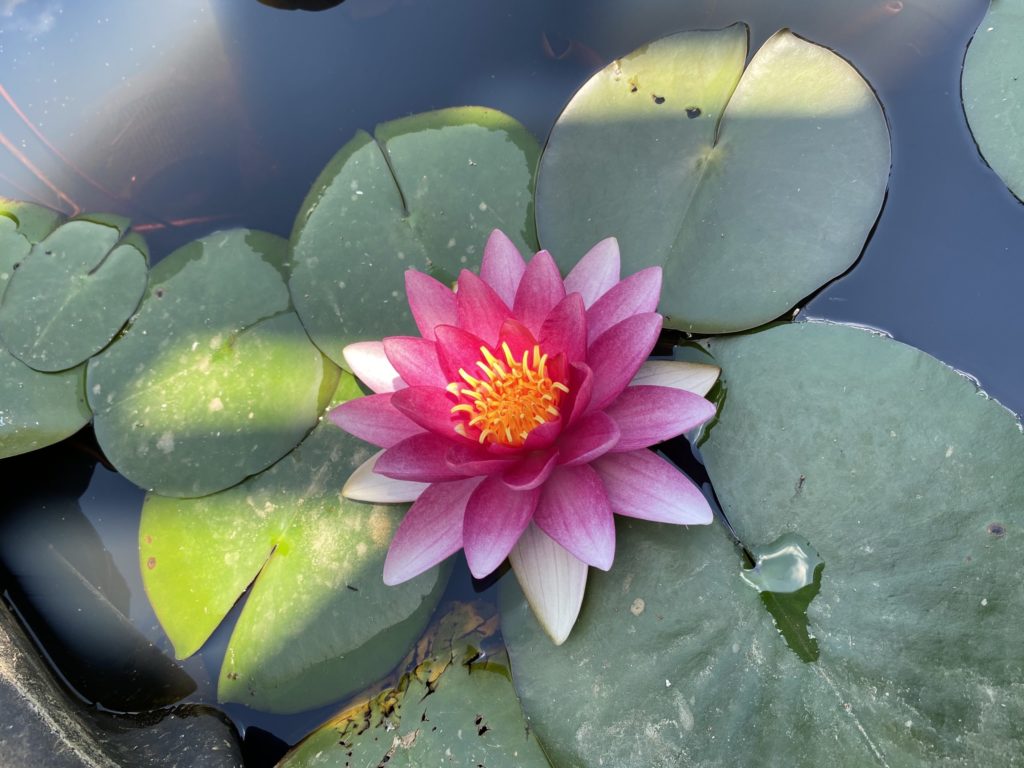
さて、今回は四ケ伝の和布点をお稽古してみました。5月からは風炉点前なのですが、わが茶室『純心庵』での炉点前ができていませんでしたので、復習の為、炉点前で練習です。掛物は6月に相応しく梅雨を詠んだ義母の書による自作の俳句のお軸です。『口もとに すこし笑みあり 梅雨仏』花は庭から切ってきた鉄扇。
This week I practiced wakin-date, one of the four shikaden procedures. Usually, the chodo society starts using furo beginning in May, but since I haven’t practiced winter ro procedure in my tea room, I decided to go through this wakin-date in ro style.
In my alcove I displayed clematis and hung the scroll with haiku, made and handwritten by my mother-in-law.
kuchimotoni
sukosi emiari
tsuyubotoke
(a slight smile on the face of Buddha in rainy season)

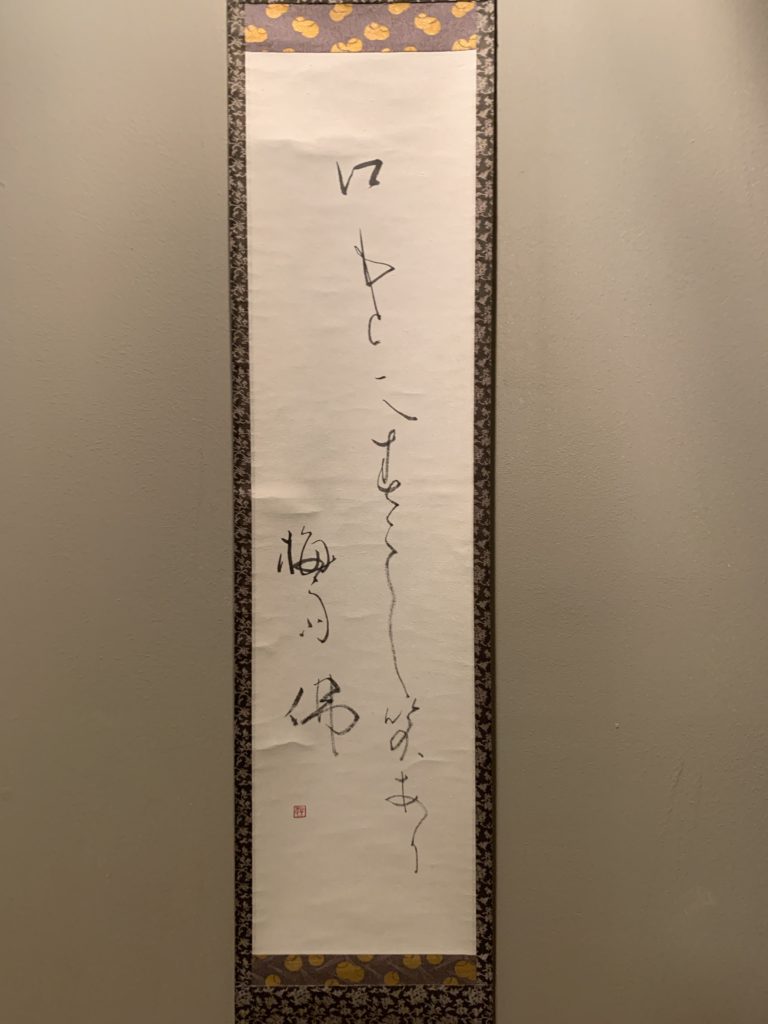
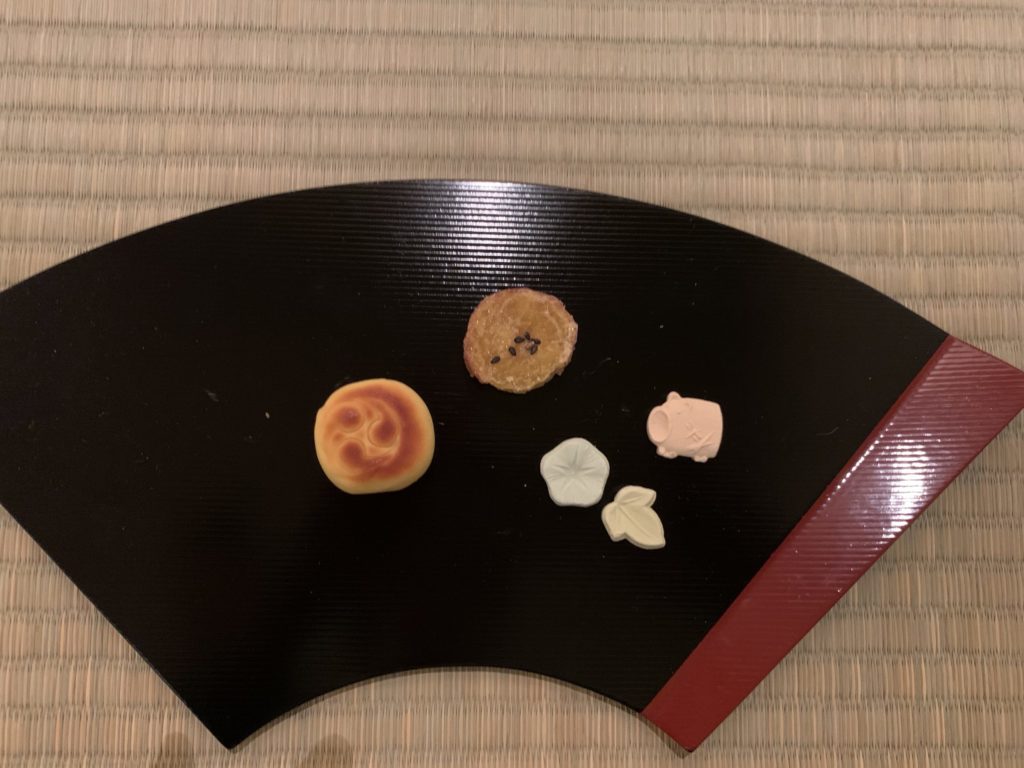
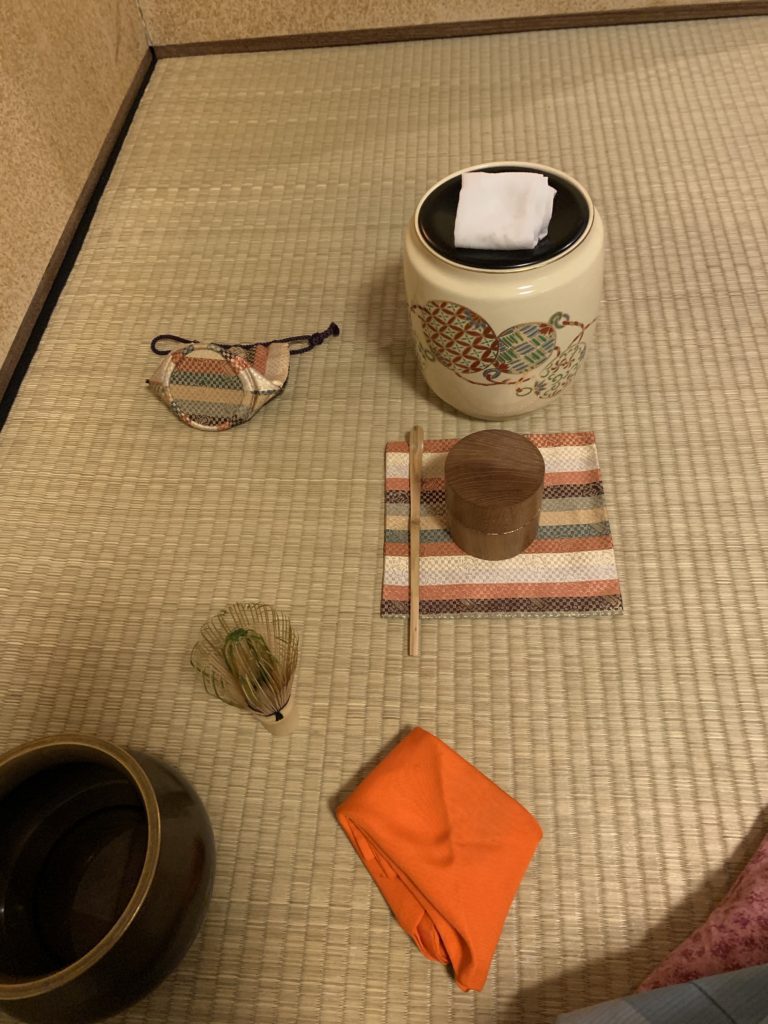


和布点は名物裂地で仕立てた古帛紗と同様の裂地の仕覆を用います。茶入れはけやきの中次、中は金張。茶杓は中節。茶碗は黒楽。水指は塗蓋の染付。この点前では和布を取り上げる時、拝見に出す時、拝見問答の後に茶道口へ下がる時のそれぞれの扱い方を習得する必要があります。茶杓を置くのは和布の上、茶筅の位置は建水の右肩、あとは濃茶点前に準じます。
In wakin-date, we use kofukusa and shifuku “ cloth pouch”, both made by the same fabric called meibutsugire. They are historical patterned or received from a notable person.
Other tools used were: nakatsugi “ gold lined tea container” with keyaki wood, chashaku with nakabushi “the node in the middle”, kuroraku jawan, and a ceramic mizusashi with a lacquered lid.
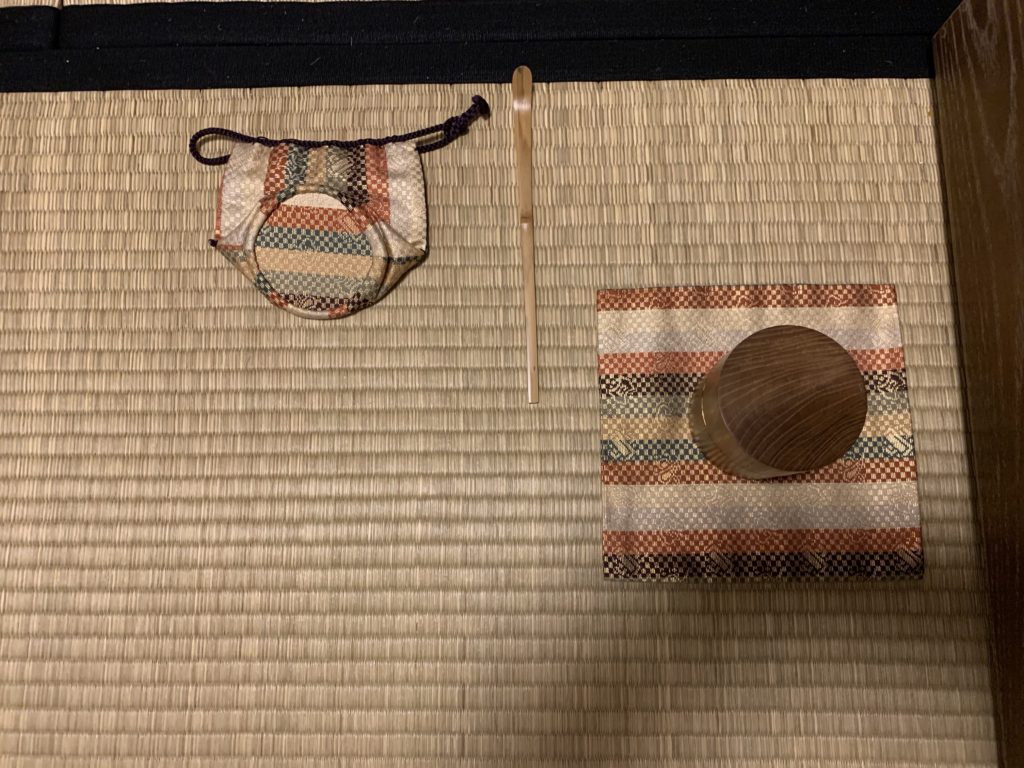
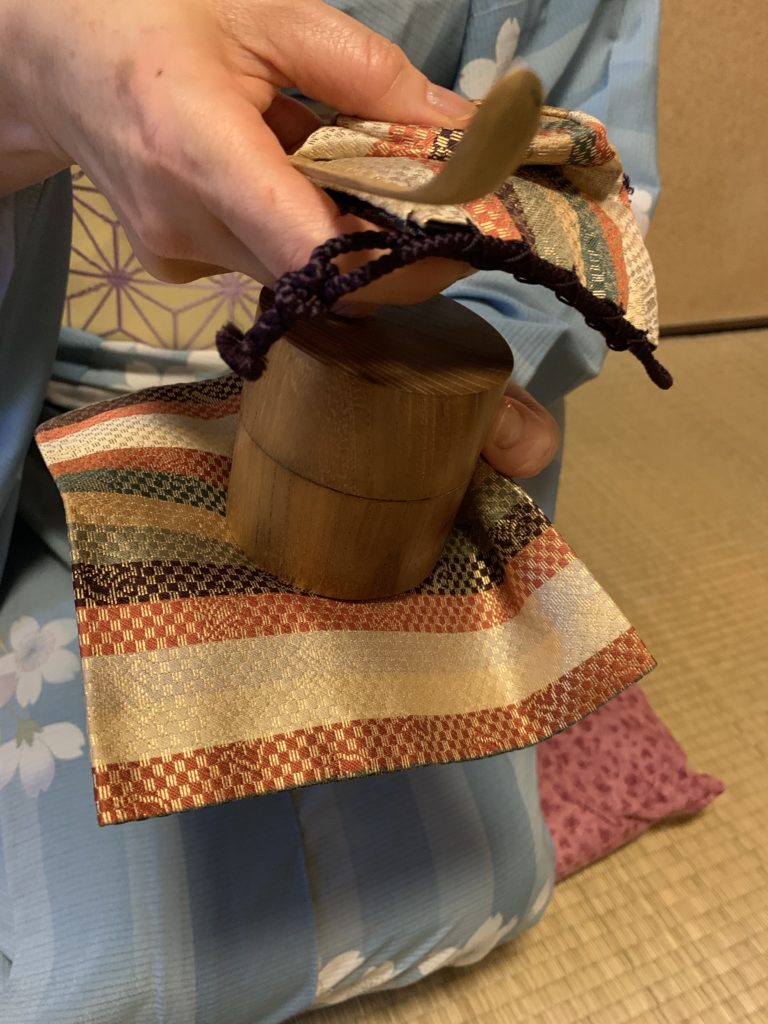
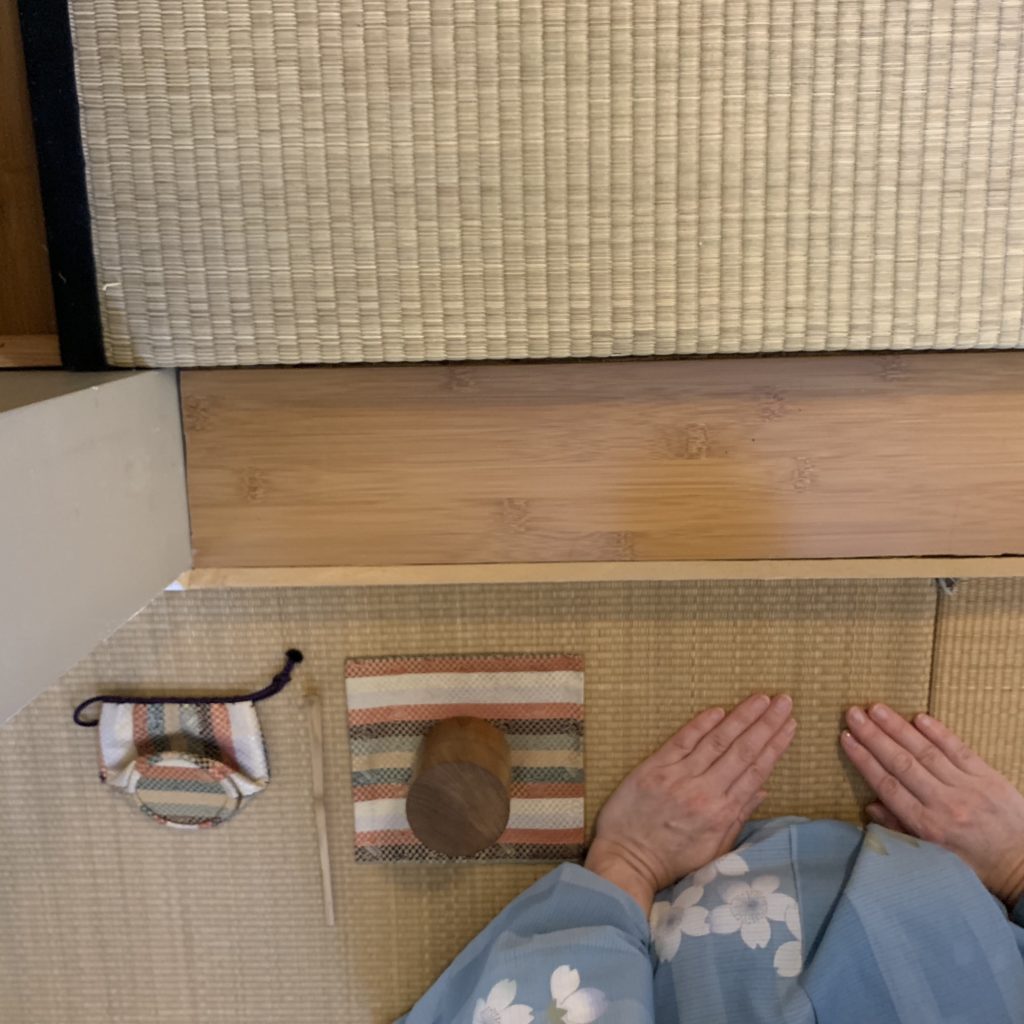
Because wakin cloths are an important part of the ceremony, special care is needed when handling them, including picking them up, lining them up for viewing, and finishing and taking them back to the sado-guchi (entrance and exit).
The location of the chashaku is on top of the kofukusa, and the chasen is at the upper right of the kensui.
Beside these points, most of the wakin procedure is very similar to the koicha demae.